Inside Stòffa, the NYC Brand That Makes Stylish Men Want to Toss Out Their Wardrobes
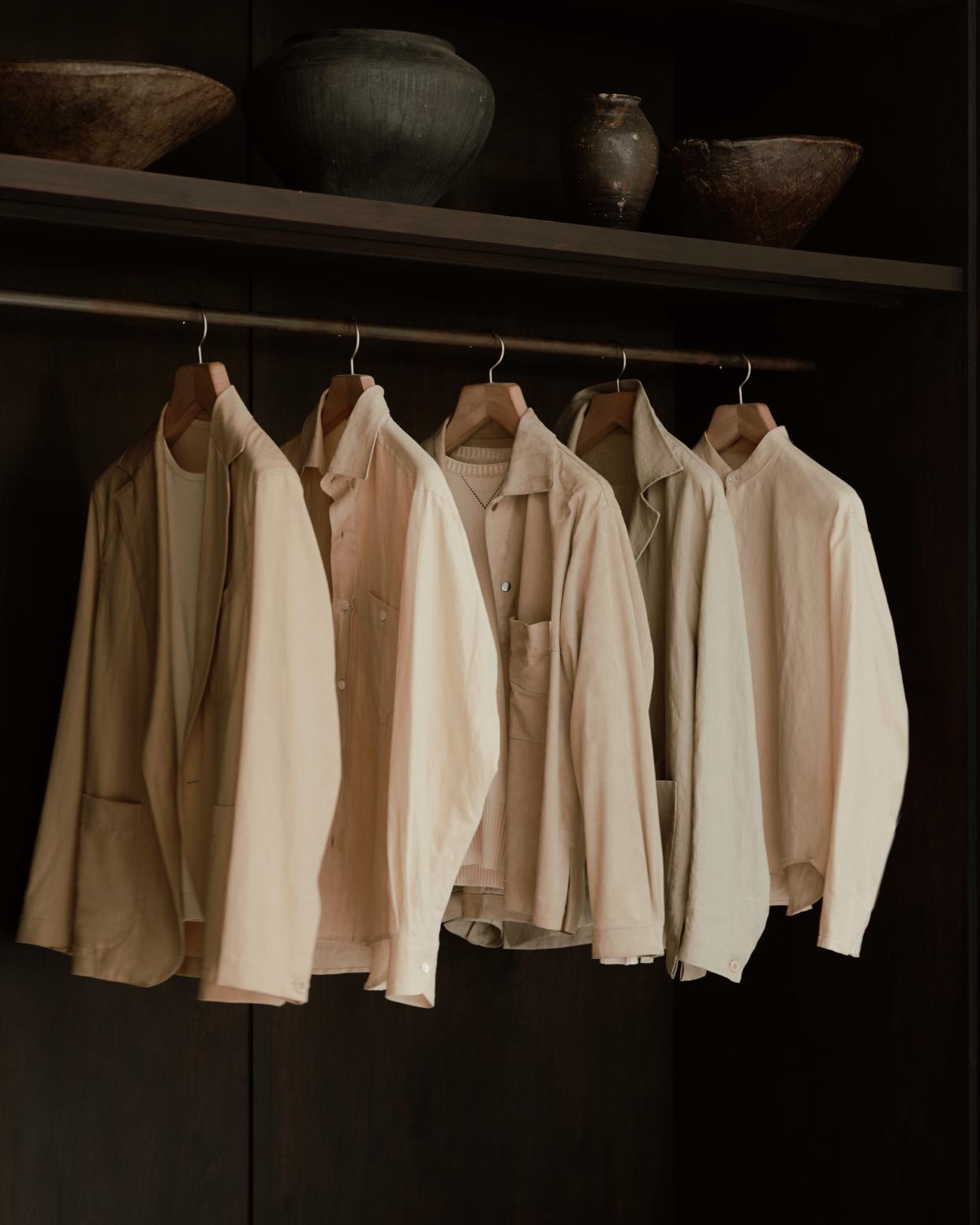
Courtesy of Stòffa
Around 10 years ago, Samer Saliba went to a pop-up at the New York boutique C’H’C’M’ for the menswear label Stòffa. The brand was just barely a brand at that stage, really, offering a small selection of hats and bags alongside a handful of made-to-measure outerwear styles. Saliba ordered a field jacket, which he liked for its many pockets, and put a rush order on it so that he could wear it on his upcoming honeymoon in Japan. “That jacket, I’ve taken it with me to maybe 20 countries,” says Saliba, who works in the humanitarian space. “Traveling the world, being able to feel comfortable, wearing something that is suitable to literally any context but that was still specific to my aesthetic, something that’s uniquely mine—that’s special.”
Today, Saliba says he has upwards of 30 items from Stòffa, including that same boxy field blouson in four different fabrics. Over the years, he’s developed a deep love and reverence for the brand’s signature process-driven, individualized approach to crafting garments. “It’s hard to find something that you have the willingness to be patient and wait for, and have the wait be actually worth it,” he says. “But this is yours, in many different ways—in terms of aesthetic, in terms of the way it fits your body. Like, it has your name on the inside, you know? I just had a kid and I’m very excited to pass down all my Stòffa gear one day.”
Stòffa is the brainchild of Agyesh Madan and Nicholas Ragosta, who met while working for the revered Neapolitan tailoring company Isaia. They launched their label in 2014, initially through pop-ups—-like the one where Saliba first encountered it—and small traveling trunk shows that bounced around Los Angeles, San Francisco, London, Stockholm, and Paris. Their specialty remains made-to-measure clothing; the pair design seasonal collections and take tailoring appointments with clients who can make adjustments from existing patterns, allowing for a certain amount of personalization in terms of fit and fabrication. Then the items are made at workshops in Italy and delivered around six weeks later.
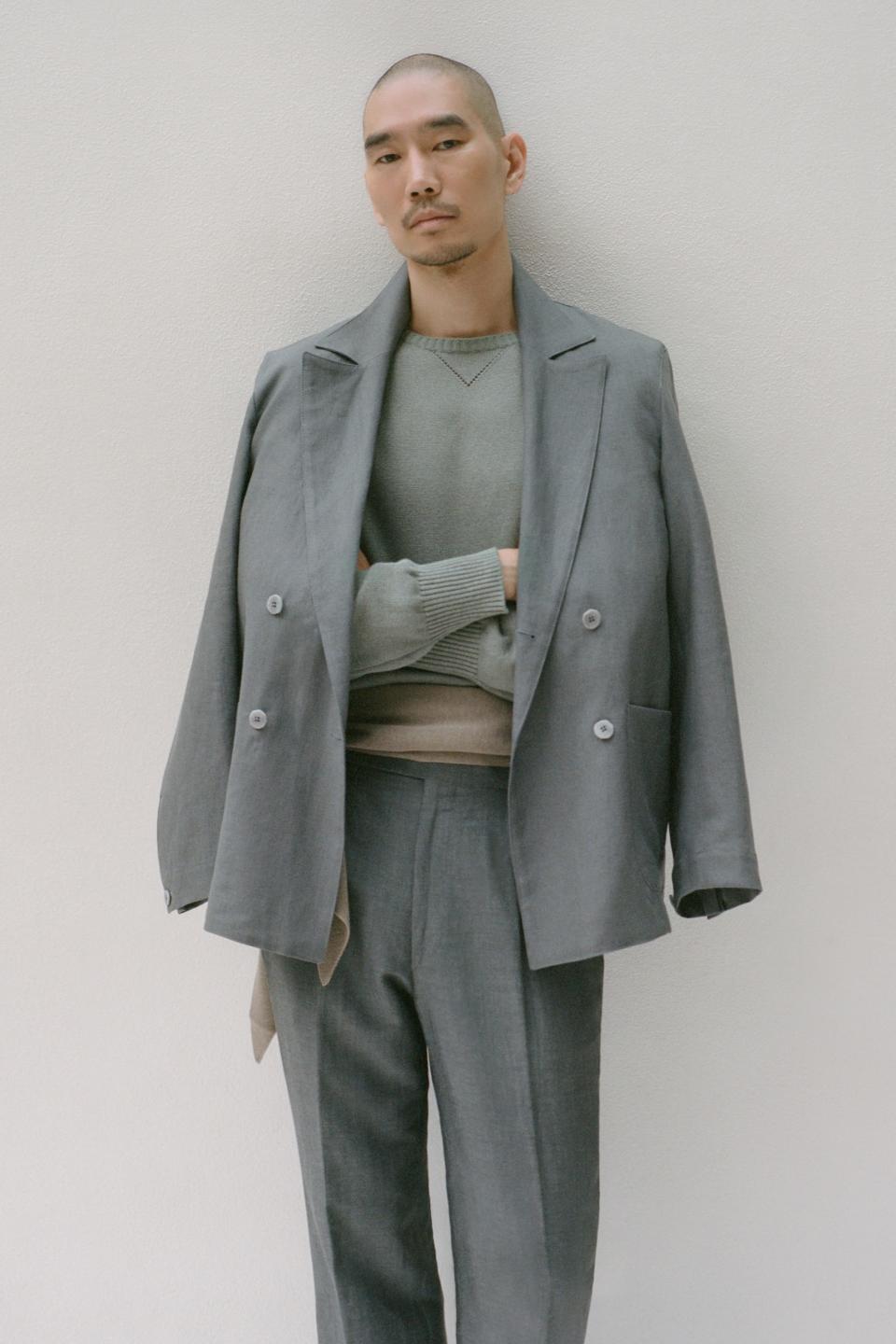
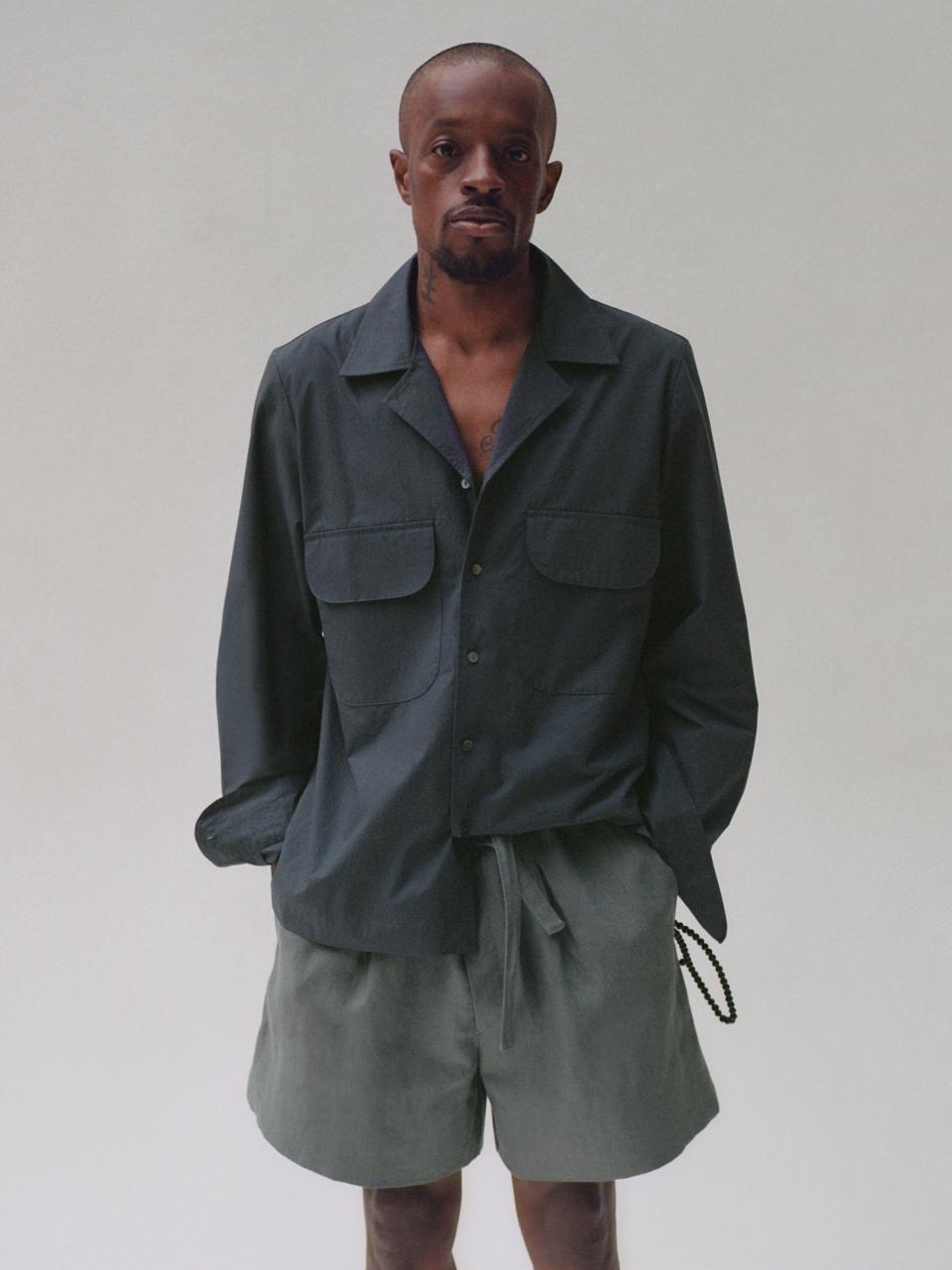
Last month, Madan and Ragosta opened their first public-facing storefront, in SoHo on Grand Street just off Broadway. The 2,000-square-foot shop features a smattering of ready-to-wear in the front, with a spacious appointment-only atelier hidden in the rear. The latter is an evolution of the original space the brand opened in 2019, on an upper level of a nearby building. Today, despite the new off-the-rack offerings, custom orders continue to make up the majority of Stòffa’s business—the duo average eight hour-long appointments per day. “For a long time we’ve been slightly inaccessible to people, because we were located on the second floor,” Ragosta says, hours before the store’s opening party. “So this is a nice opportunity for people to browse and get hands-on with the brand.”
“You do end up being vulnerable, for the first time,” Madan adds, with a nervous grin. “We are so prepared for appointments. We know you’re coming. We know what you bought before or, if you’re new, we probably had a conversation before you came in. Here, it’s a bit of a surprise. We’re learning how to present the product in the front, where anyone can see it.”
In the shop’s design, you can see a taste of what makes the brand so intoxicating to a certain type of discerning shopper. The clothes and space are classic, stripped back, simple. Lived in yet elegant. Nothing too showy; every detail beautiful and considered. Ragosta explains that they ripped up the floors, including jackhammering layers of concrete, to uncover the building’s original stone terrazzo; the walls, meanwhile, were finished with white milk paint, allowing the raw textures of crumbling plaster and exposed brick to shine through beneath. Dark-stained ash cabinets and cupboards—handcrafted by a woodworker in Brooklyn—line some walls, while racks with just a few garments hanging on them edge others. The back area is illuminated by a dramatic loft skylight, which is helpful for noticing the subtleties of the fabrics. Vintage furniture, dark earthen ceramics, and ikebana-style flowers round out the sparse decor. All together the effect is calming, almost meditative.
“Our aim has been this idea of slowing things down, how we make things and how you purchase them,” says Madan. “We’re happy to see a lot of people coming and connecting with us on that. If you prepare the space well enough, you leave room for discovery. But there’s a way to ease people in. It’s a physical manifestation of what we try to do online. We always have someone on hand who’s a product specialist: Not someone who’s going to get you a size, but who can talk to you about the textile, or the way it’s going to be made for you.”
Indeed, the fabrics and craftsmanship are at the heart of all Stòffa does. Its clothes are made entirely from natural fibers, rendered mostly in an earthy palette of taupes, browns, and beiges, with charcoal, ivory, and a few sun-faded seasonal colors (currently seafoam and pistachio) thrown in for good measure. Stòffa roughly translates to “fabric” in Italian or “stuff” in Latin, and as such, there’s an almost obsessive fixation with textiles: For summer there are washed linens, wool seersucker, cotton silk piqué, cotton canvas. Colder months feature heartier weaves, like wool flannel and cashmere, plus leather and suede outerwear.
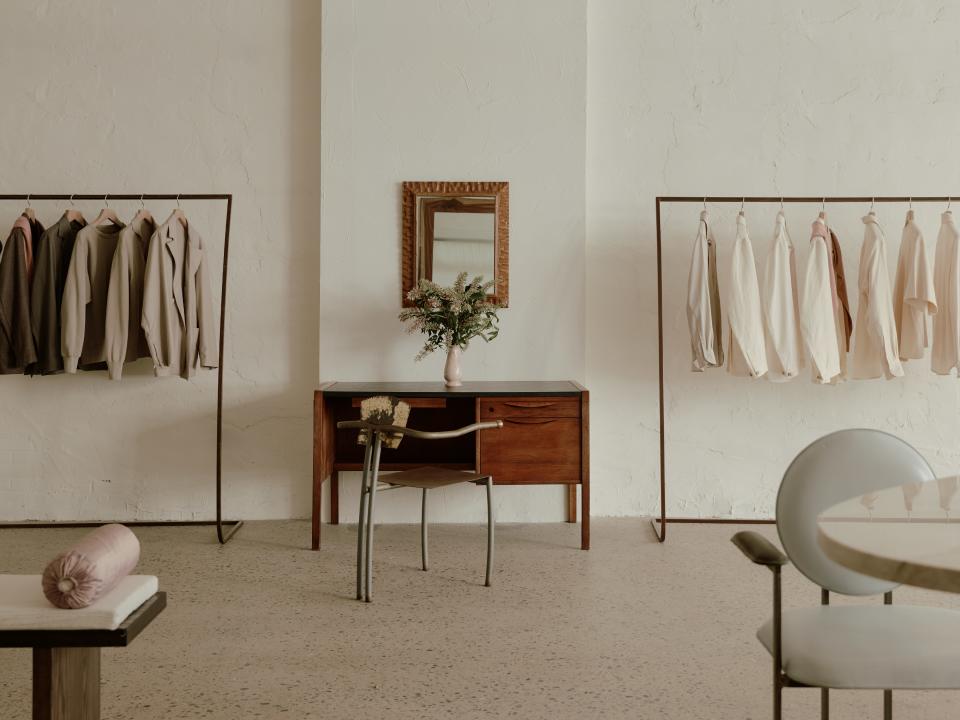
“When we first talked about Stòffa, we talked about our joy of textiles and the process of having something made for yourself,” Madan says. “Receiving it, the excitement around it, cherishing it because you felt like you were a part of the making of that. That’s stayed exactly the same from the beginning, we’ve never had second thoughts about that. That joy, and seeing that joy in someone sparks joy in us.”
None of this would work, however, if the designs weren’t so damn good. Stòffa takes the most foundational items in a man’s wardrobe and whittles them down, leaving behind only what’s needed. Summer suit jackets are unlined and nearly weightless, while T-shirts are cut boxy from an airy knit. Trousers are insouciant, draped, with single or double pleats and cuffs. The look veers slightly anachronistic—pants sit high on the waist, double-breasted blazers come in an alluring 4x1 silhouette—a nod to the founders’ time at Isaia, perhaps, but there’s also a whisper of Armani there too. Still, there’s no pretension or affect; these clothes are functional, casual, rumpled in a rakish, Italian Riviera sort of way—you can imagine tossing them in a suitcase and heading out the door without much fuss. It’s easy, upon walking into the shop, to feel the rising urge to buy one of everything and run home and toss out your existing wardrobe. In fact, that sort of thing has happened with their customers on more than one occasion.
Stòffa, with its ability to marry old-world craftsmanship with a modern infrastructure and aesthetic, feels like the answer to a problem you didn’t know needed solving. Maybe you feel that fashion is overwhelming or irrelevant to your life now. But you still want to engage with clothes in a more honest way. That’s what Stòffa can do. It’s practical and attractive but also particular. It’s certainly not for everyone but for the ones it is for, seeing it for the first time must feel like coming home.
Part of that, I think, is the specificity of the guy they design for. I spoke to Eric Mcneal, who has styled for the brand for many years now. He was introduced to Stòffa as a customer, booking what he thought would be a one-hour appointment. He left four hours later, with some clothes ordered, a job, and some new friends. “I fell in love with the story and how slow and intentional they are,” he says. “When you work for a brand and with a brand, it’s rare to feel so seen.”
“What drew me to the brand is the feeling that we all enjoy life, we have hobbies, we enjoy real things,” he adds. To that end, Mcneal notes that they don’t work with models, but what they refer to as “protagonists”: men (albeit handsome ones) who are not just professional mannequins, but real guys, often from their circle—surfers, professors, furniture designers, artists, entrepreneurs, many of whom just so happen to be customers. Madan’s father has modeled. “That influences our styling. How we start is with How are we feeling? We talk about life and movies and how we feel. I think, really, that is the start of how we shape the collections.”
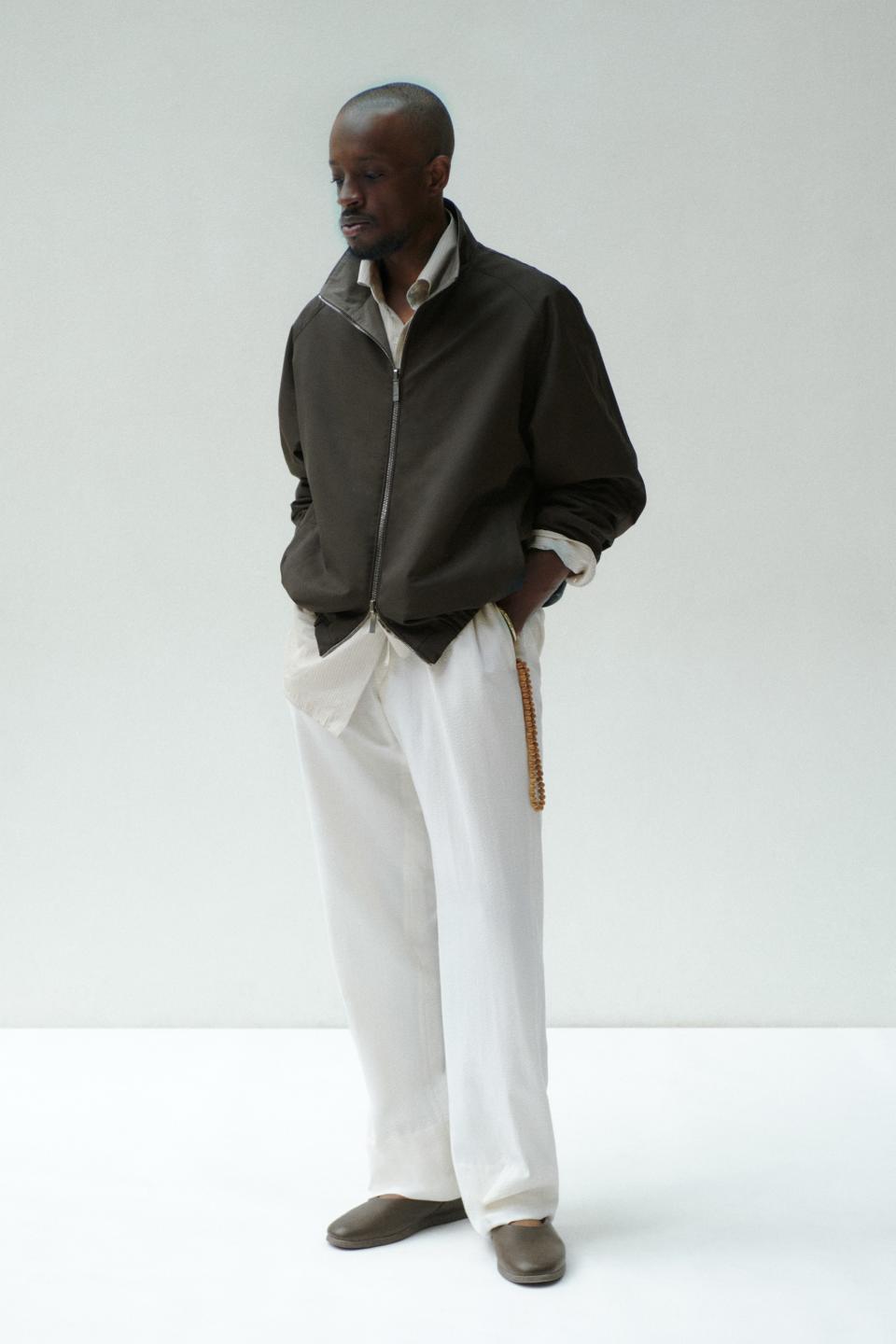
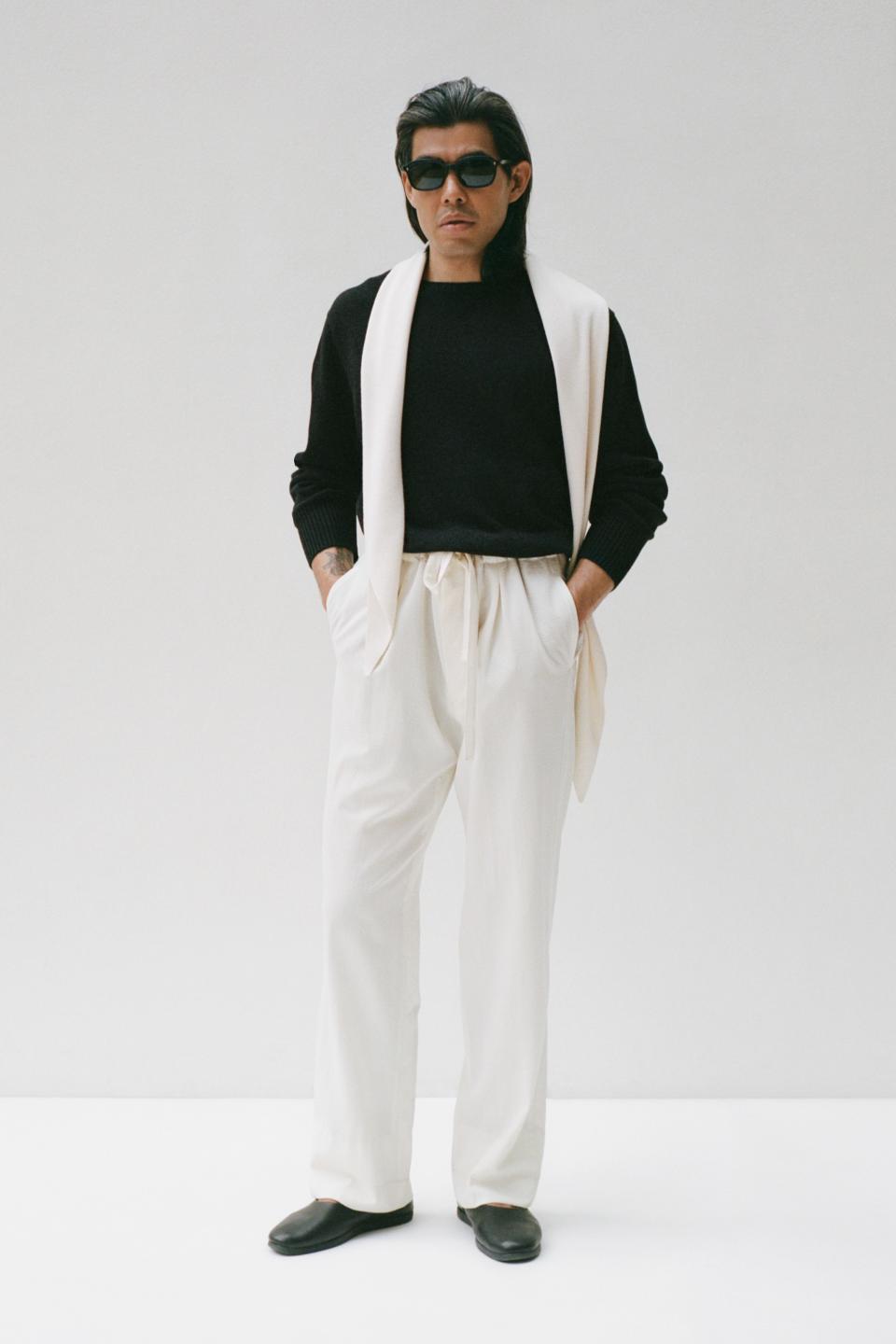
Ragosta and Madan’s upbringings were quite different. Ragosta grew up in Rhode Island and can recall his father, a lawyer, being fastidious about his presentation, a stylish man who shopped at the local men’s shop, Zuccolo’s, run by two brothers. Madan, on the other hand, grew up in India, where making one’s clothes was an ingrained part of daily life—there were no “brands,” per se, one just bought fabric, or was gifted it, and had their clothes made. “It was a conversation in the house, like food,” he says. And yet both men fell in love with the idea of clothes and how they’re made, and somehow ended up sitting across from each other in a workshop in Italy, at Isaia, where Madan worked on product development and Ragosta on the made-to-measure program. They felt a kinship, as both were the only guys in the room under 30, but also it became clear that they aligned on certain values of making clothes and that they could see themselves striking out on their own.
Now, a decade later, they have grown from those pop-ups to having 10 employees, eight of them full-time, not counting the workshops in Italy that they work so closely with. Madan calls them partners and notes they’ve been working together since the beginning.
“It took us a decade to get here,” says Ragosta, “but the concept was here, pretty much the same, since day one.”
“When we first came to this, there were two different worlds: designer luxury and craft,” says Madan. There are brands that know how to communicate a certain message through marketing, to create desire and engage with the zeitgeist, and there are others that just focus wholeheartedly on making things at the highest level they can, and hope that the right people will find them. Madan thinks Stòffa can combine these two ideas, and the store is the next step in blending them together.
“This isn’t a point of completion for the brand, obviously, but it does feel like a milestone—because we've grown deliberately, on our own terms, and it's taken us a minute to get there,” says Ragosta. “But, yeah, this does feel like the full realization of what we've wanted to do for a long time.”
Originally Appeared on GQ
More Great Style Stories From GQ
The Balenciaga Platform Sneaker Is the Chonkiest Shoe Ever Made
Bradley Cooper Went Full-Dad Mode in Rare Air Jordans and Two Pairs of Glasses
The End of Merch
For Years, Sylvester Stallone Secretly Owned a Legendary Watch—It Sold for a Fortune
Not a subscriber? Join GQ to receive full access to GQ.com.


